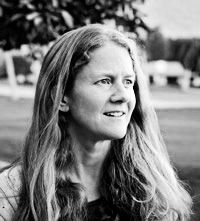Dr. Kimberly Claffy, a 2019 inductee into the Internet Hall of Fame, couldn’t attend the induction ceremony itself due to an unusual circumstance: She’d recently broken some bones mountain biking. Today, that youthful spirit and fearlessness continue to guide her work.
Seeing the big picture in a field that involves collecting and analyzing minute data points from around the world, Dr. Claffy is enthusiastic about classifying all aspects of the Internet’s infrastructure — “what’s underneath the sites and apps we use every day,” as she described it recently.

“The field of Internet measurement and analysis is a hard place to do science,” she said. “Can the Internet operate both freely and securely? The ultimate goal involves so many trade-offs.”
She notes that when the original version of the Internet, which was a government project for the first 25 years or so of its life, was turned over to the private sector, “it was exciting, but we didn’t have a security system in place for it. It wasn’t considered critical infrastructure, the way telephones, mail, TV, radio, and newspapers once were. Now, the Internet has more or less replaced all of those things.”
Her work directing the Center for Applied Internet Data Analysis (CAIDA), which she founded, has involved gathering empirical data on the layers – routing, addressing, and the Domain Name System — that underlie all the activities on the Internet, with the ultimate goal of reducing the intentional and unintentional harms that can result from its misuse. Her team is also analyzing the ways that the Internet’s security systems can fail, and the weaknesses in its infrastructure.
“We’re trying to figure out how to achieve the best understanding of its threats, vulnerabilities, and harms,” Dr. Claffy says, “so that it can operate best for society worldwide.”
Asked how that’s going so far, Dr. Claffy laughed, “Not too successfully yet, but there are a lot of good people working on it. We’re not finished yet!”
Her team at the University of California at San Diego is one of the key groups that are not “finished” with that project.
The major obstacle to that is much of the data required to assess the harms and their impact is not available to academic researchers. This makes it hard for the academics and other public interest advocates to play their intended role in society, which makes it in turn hard for democratic processes to effectively work. None of this work is easy, and Dr. Claffy is the first to point out that she’s not finished yet.